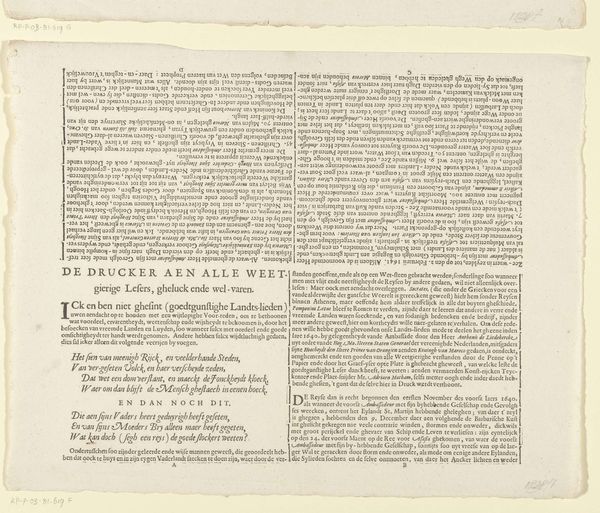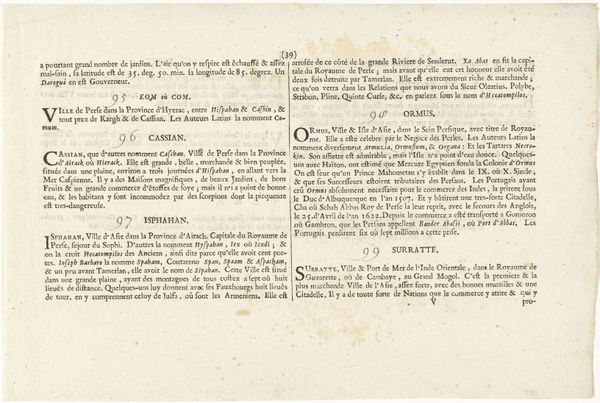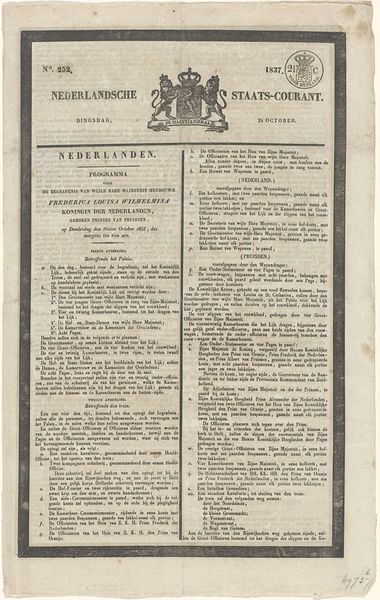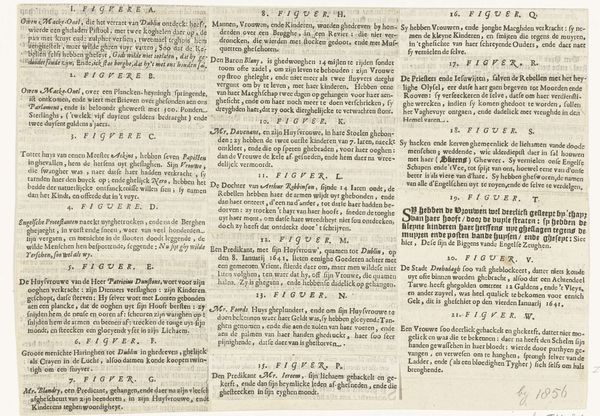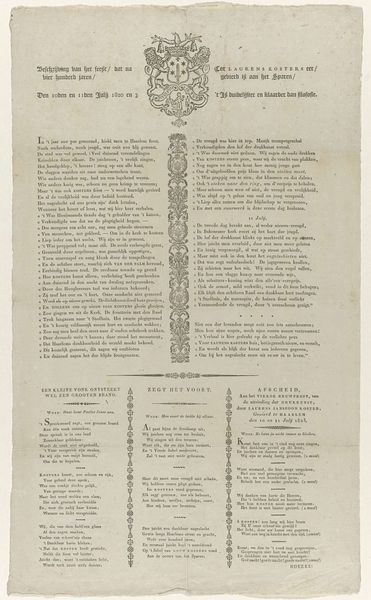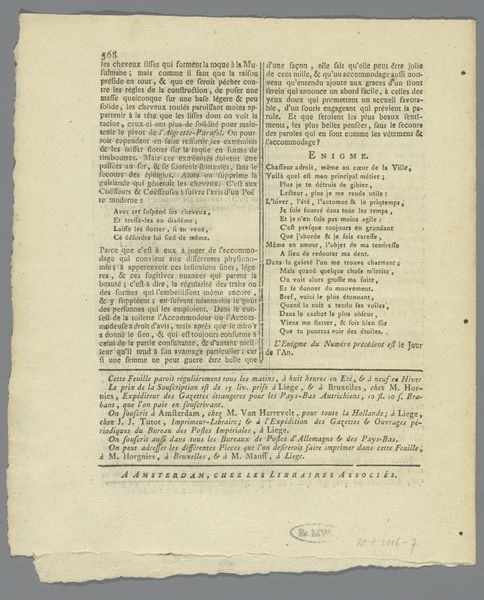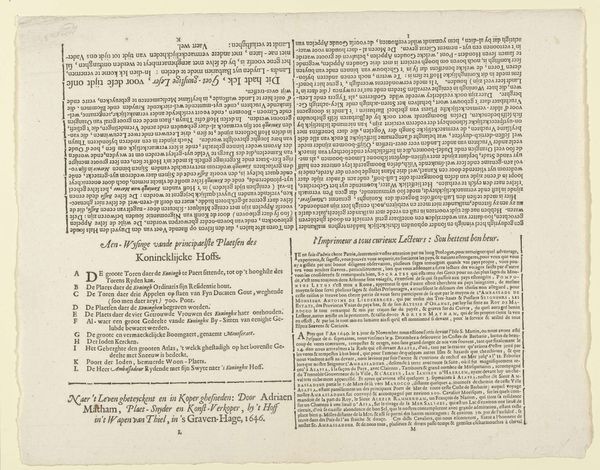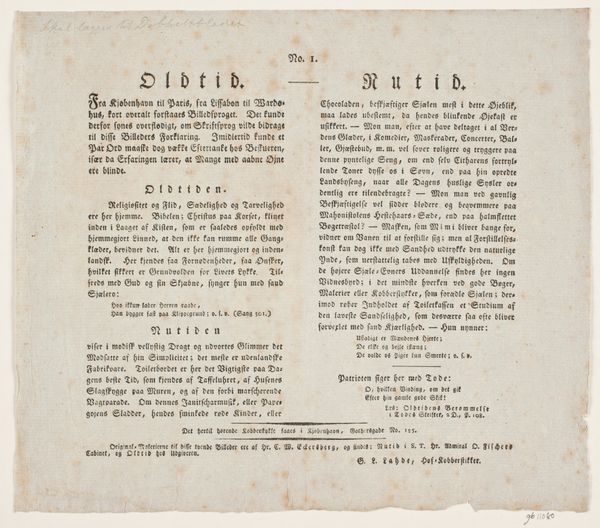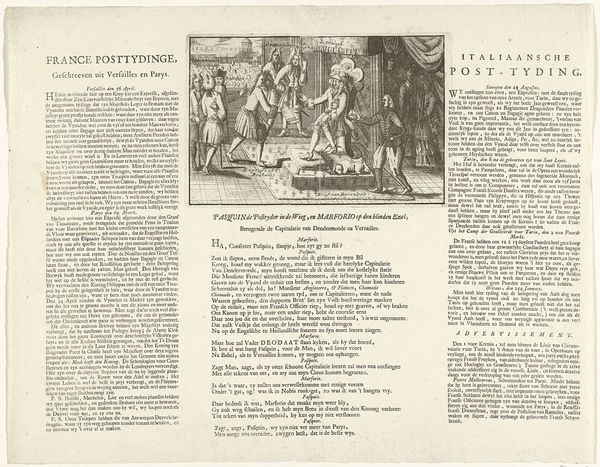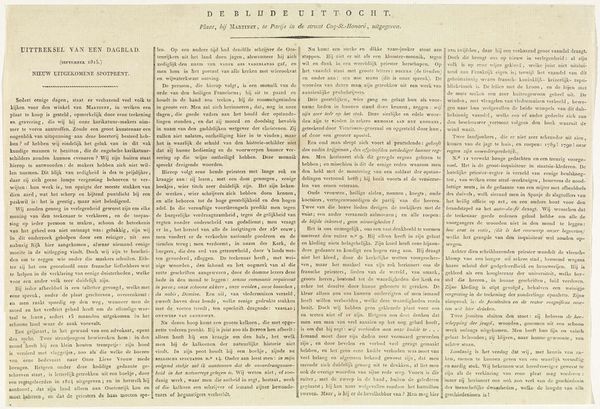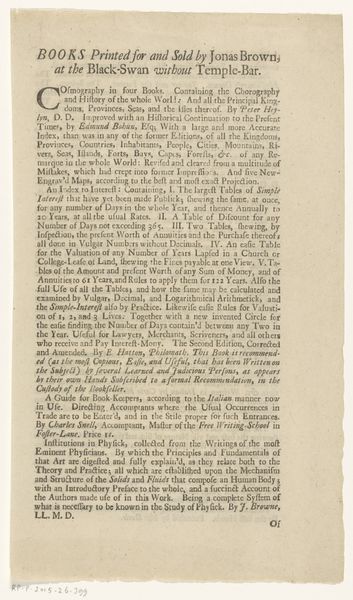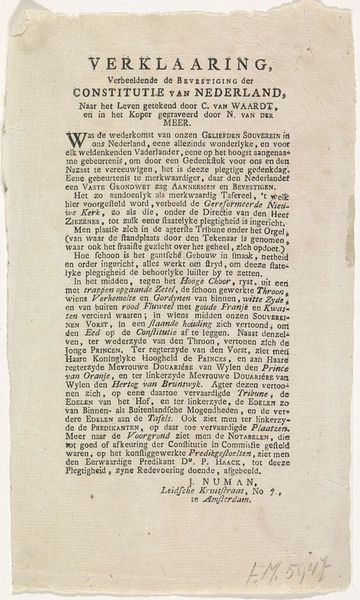
graphic-art, print, typography
#
portrait
#
graphic-art
#
neoclacissism
# print
#
text
#
typography
Dimensions: height 199 mm, width 330 mm
Copyright: Rijks Museum: Open Domain
Curator: Looking at this print titled "Verklaring van het gedenkteken voor Joannes de Fremery," dating between 1819 and 1821, one is immediately struck by the dense typography typical of memorial prints of the era. D.A.M. Sluyter, a name at the bottom, identifies as the art dealer behind the edition. Editor: My eyes are drawn to the intricate arrangement of text; it appears more like a tapestry of words than a straightforward commemorative piece. What material or process makes such detail possible on a printed medium? Curator: As a graphic art piece—specifically, a print with substantial typographic elements—it's likely an engraving or etching. These techniques allowed for fine lines and detailed textual reproduction, facilitating broad circulation of these eulogies among the Dutch populace. The monument referenced serves as the subject, as Fremery was a theology professor, therefore we see text relating to Christianity. Editor: Fascinating. I wonder, how does the choice of typography and layout contribute to the socio-political role of the piece? It seems to emphasize reason and order—classic elements one finds in Neoclassicism. How did print function in the creation and memorialization of a public figure such as J. de Fremery? Curator: It perfectly encapsulates the Neoclassical art movement that favors restraint, moral teaching and philosophical thought. Think about it this way: print enabled wider participation in constructing the memory of important figures. Engraved prints democratized art; unlike unique paintings, prints allowed more people to own and reflect on these tributes, thus shaping the public narrative around individuals like de Fremery and their virtues. The fact that it's also just text, and the prominence of language suggests there were greater interests here at play, likely for distribution or education. Editor: So, what may initially appear simply commemorative functioned to affirm values within the community? By imprinting De Fremery's memory, society imprinted its preferred virtues. The visual manifestation and its distribution reveal how closely linked art was with power. Curator: Indeed. The act of memorializing de Fremery through mass-producible art became a means of reinforcing religious beliefs, his teachings and community ties in Middelburg during this time. Print served both a spiritual and a very material purpose in the formation of early modern society. Editor: The means and process of production thus are critical lenses when investigating graphic memorial artworks such as these. We understand that its intent involved public memory construction through Neoclassical taste and mass-market mediums.
Comments
No comments
Be the first to comment and join the conversation on the ultimate creative platform.
